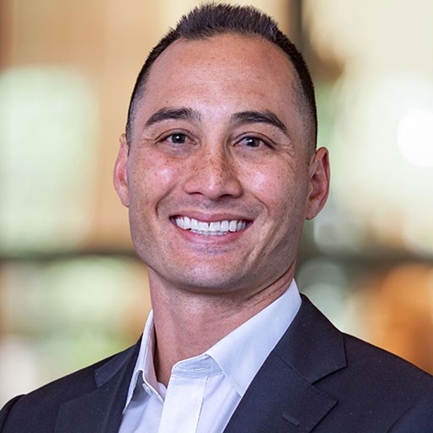In a payer landscape dominated by giants, it’s little wonder that more health systems are creating their own insurance plans. Provider-sponsored health plans (PSHPs) are an attractive model for health systems because they offer the tantalizing prospect of escaping the frustrations many providers encounter in their relationships with large national plans—laborious pre-authorization practices, high denial rates, and reimbursement reductions, to name a few.
Being both the provider of care and the payer enables PSHPs to control more of the premium dollar, give patients more of a say in their care, and implement value-based care models. But as many PSHPs discover—often, too late—running a health plan is vastly different than running a healthcare system. And while PSHPs can expect to encounter hurdles around capital investment and talent acquisition, what tends to stymie them the most is the need to adopt a payer’s mindset—in other words, making difficult decisions to ensure the plan is financially viable for the population it serves.
ECG’s payer services team has built PSHPs from the ground up and continues to see interest in their development. In a two-part series, we’ll talk with four of our experts about what it takes for a PSHP to succeed.
Here in part one, Joe Mangrum, a principal with ECG and leader of the firm’s payer services practice, and Andrew de la Peña, a senior manager in the practice, explore the factors that lead health systems to pursue insurance products, share strategies for success, and identify common pitfalls.
Q: What fundamental market forces or changes in healthcare delivery make provider-sponsored health plans an attractive option for health systems today?
Joe: Health systems are dealing with financial pressures and competition.
On the financial side, we’re seeing a lot of payer consolidation—big insurance companies are merging and growing all across the country, and that positions them to essentially dictate reimbursement terms to hospitals and doctors.
When a health system sponsors its own health plan, though, it becomes both the provider of care and the insurer. That means they get to keep more of the premium dollar and have more control over how they allocate the resources to patient care.
On the competition side, in most regions of the country, providers are battling not only each other, but also large national players that have a dominant market share, with well-established brand names and enough size to heavily influence or set market dynamics. By offering their own health plan, a local or regional health system can build loyalty among patients. They can align care provision and insurance in a way that puts patient outcomes at the center and, in theory, create a better experience for the patient.
Andrew: Provider-sponsored health plans can be a brand extension of the provider itself. So with MA products, ACA products, managed Medicaid products, you’ve got individual consumers making decisions, not employers or brokers making decisions for thousands of employees. Those individual consumers have a direct relationship with their doctors and therefore can make decisions about their care directly with their doctor, who is part of the core network of the provider-sponsored health plan. Provider-sponsored health plans are also a good pathway for providers to pursue value-based care and innovative care models, because they’re aligned and can collaborate closely.
Q: What are the biggest operational hurdles in launching and managing a provider-sponsored health plan?
Andrew: Finding the right talent is one of the biggest challenges. The health insurance market is mostly dominated by a handful of national insurers, and they employ most of the health insurance talent. So when a provider is looking to launch their own health plan and they’re looking for people with actual health insurance experience, there are not a lot of areas to look unless you’re recruiting talent from those national insurers.
Creating a network of providers outside of your own system is another hurdle. The provider-sponsor health system will make up a very high percentage of the provider-sponsored health plan’s network, but you still need to round out your network with other providers in the market. And often times being a small plan, it’s hard to get those contracts at market-competitive rates given the lack of scale.
Joe: To expand on what Andrew said, you need the right leadership expertise. Too often we see the executive C-suite of a provider-sponsored health plan made up of former executives from health systems—including the parent organization—and not from health plans. That can be fine, but running a health plan is fundamentally different than running a health system, and leadership has to be hyper-focused on functions such as risk adjustment, underwriting, and network management.
There’s also the financial risk that comes along with starting a provider-sponsored health plan. When you run a health insurance company, you have to have enough reserves on hand to pay all the medical claims. Health systems aren’t used to tying up that type of capital. And then when you think also about accurately pricing premiums and analyzing risk pools, there’s some actuarial skills that are very hard to come by.
Q: So in other words, providers have to learn to think like insurers in order for their plan to succeed.
Joe: There are crucial aspects of health insurance that rarely cross the minds of providers. You need to have leadership that knows this type of business. Besides a fundamentally different business, there’s also a fundamentally different culture. Healthcare provider organizations are used to thinking in terms of volume. But when you’re a payer, your goals pivot toward managing population health and controlling costs in a much more direct way. That requires doctors, nurses, and administrators to think wholly differently about care paths. So now you’re on the hook for the total cost of care, not just delivering services.
Andrew: And just to say it directly, there’s a lot of news right now about health insurance companies denying claims and requiring prior authorizations. And sometimes providers launch their own health plan thinking they can just waive all these requirements. But you can’t do that when you’re at risk for the dollar, and you’re going to have to make tough decisions. So as Joe mentioned, you can’t always think like a provider in those situations. You have to think like a health plan and manage it in a way that’s financially viable for the population you’re serving.
Q: How can providers avoid some of those pitfalls if they’re looking to start a health plan?
Joe: There are solutions. You can bring in people like us who can handle that side of the business, and there are other third-party administrators that plans can outsource functions to. But at least in my experience, leadership of the health system sponsor does that often too late. You need to do it in the beginning when you’re building this thing from the ground up. It may sound daunting. But as long as you’re thinking about these hurdles and plan for them, you can mitigate the risks, avoid a lot of them, and be successful.
Andrew: There’s also a cost savings for a provider to launch a health plan in the form of insuring their own employees. When you think about the expenses for providers, a lot of it’s salaries and benefits. So if you launch a health plan, you’re basically just paying yourself back to insure your employees. That’s a huge financial driver in some cases, in addition to growing market share.
Q: How can smaller or rural health systems effectively compete if they choose to sponsor their own plans given limited resources compared to national carriers?
Joe: A lot of the smaller players benefit from teaming up with others—working with a larger health system, joining forces in a network of rural providers, or finding the right cost-effective vendors. By pooling resources, whether it’s administrative know-how, technology platforms, or even negotiating leverage, they can function almost like a larger entity without losing their local focus. Because that’s one thing that we really advise them not to do—don’t lose their local focus. Their close connection to the community is an advantage for them. They know their patient population better than anybody else, and that can be a huge differentiator. So they can tailor their plan benefits on the insurance side and care programs to what these local or rural residents really need. They can offer a product that’s more personal and relevant than a plan designed by a national health insurer. It’s a lot more at-home and what this community really needs.
Interviewer: Matt Maslin



